There are thousands of Kali Linux commands. Kali Linux is a similar operating system to other Linux-based operating systems. So the basic Linux commands are similar to their commands. The biggest problem for new users to learn these commands is that they cannot remember clearly and not remember them systematically enough. This article will list the commonly used uses from A~Z. It is convenient for friends to learn. This article is long and recommended to bookmark it and read it! WeChat public account kali hacker notes 
System Commands in Kali Linux
Arch command
You can use the arch command to understand the computer architecture. Arch command prints such as "i386, i486, i586, alpha, arm, m68k, mips, sparc, x86_64, etc.".
Arp command
ARP stands for the address resolution protocol, which is used to find the address of a network neighbor of a given IPv4 address.
The arp command is used to display the arp table for your Kali Linux system. You can use this command on other Linux systems as well as on Windows operating systems.
Of course, we can use it to accomplish arp fraud
arping command
The arping command is similar to the ping command, but it works on the Ethernet layer. The arping command gives the results of the reachability and round trip time of the IP address in the local network.
arping -i eth0 192.168.123.1 
Aspell Command
Aspell is a spell checker command in Kali Linux, where you can provide file names or anything from standard input to check for spelling errors. Syntax: aspell check [options] file name
aspell -c bbskali.txt
awk command
The awk command is used to manipulate data and generate reports in scripting language. It allows users to use variables, numeric functions and functions, as well as logical operators. So you can use awk to make some utilities. AWK operations: (a) Scan the file progressively (b) Split each input line into fields (c) Comparison of input lines/fields with patterns (d) Perform operations on matching lines Programming structure: (a) Format output lines (b) Arithmetic and string operations (c) Conditional and loop syntax: awk option 'selection _criteria {action }' input file Output file
#Show current memory
echo `free |grep -w 'memory'|awk '{print $3}'` 
The
bg command
bg command is used to control shell jobs. Used to restore stopped or suspended processes and background processes that are stopped after restart.
Bzip2
Bzip2 is a basic utility for compressing and decompressing files
Compressed files:
bzip2 -z bbskali.txt unzip the file:
bzip2 -d 22.txt.bz2 
cal command
cal command is used to display the calendar 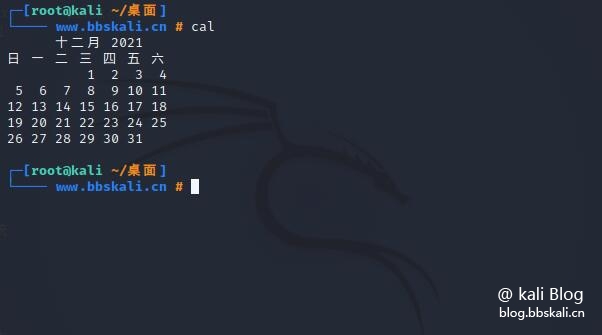
The
cat command
cat command is used to view and edit the content in the file.
cat 'New File' #Create a new file or overwrite the data on the required file
cat "File Name" #View contents in the file
cat "File Name" #Add some data to the file
cksum command
The cksum command stands for checksum, which is used to calculate the CRC (cyclic redundancy check) and number of bytes for each input file and write it to standard output.
Clear command
The Clear command is used to clear the terminal screen when the terminal screen becomes full when multiple commands are run in the terminal. Shortcut keys: ctrl+k
The
cmp command
cmp command is used to compare two files byte byte. If the difference is found, it reports the byte and line number where the first difference was found.
If no difference is found, by default, cmp returns no output.
The basic syntax of cmp command
cmp file1.txt file2.txt 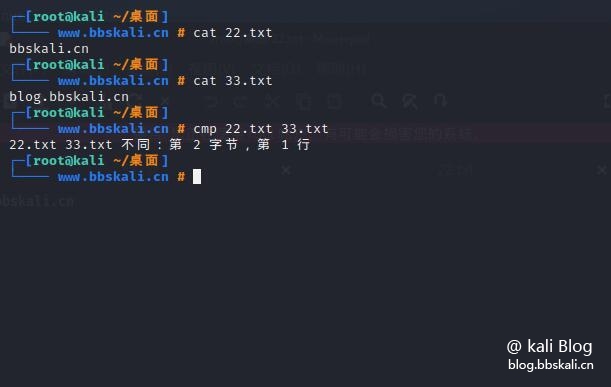
comm command
You can use the comm command to compare two sorted files line by line. Basic syntax for using this command:
comm file1.txt file2.txt
cp command
The cp command is used to copy one or more files from one location to another.
If you copy the 22.txt file, root
cp 22.txt /root
crontab command
Timed task command, very powerful function. For details, please read the article in the blog, which I have written before.
crontab -e #Edit crontab
crontab -l #List the crontab job.
crontab -r #Delete crontab. The
cut command
cut command is used to cut a portion of the row from the specified file or pipeline data and print the result out.
Display the 1st and 3rd lines of the file
cut -f 1,3 22.txt
date command
date displays the current date 
The
df command
df command stands for Disk Free to report file system disk space usage.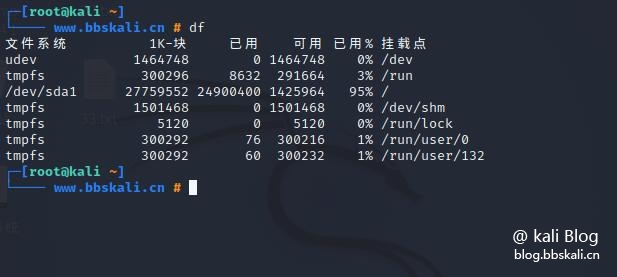
diff command
The diff command is used to display the differences between two files.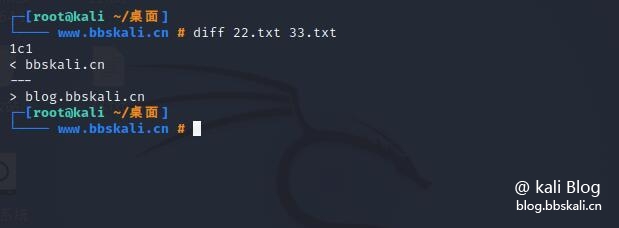
diff3 command
The Diff3 command is used to display the differences between the three files.
dig command
Get all information about the DNS of this website.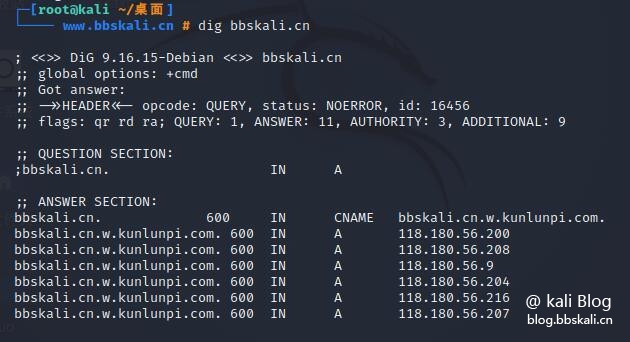
dir command
The dir command is used to print a list of contents of a directory. Most Linux users use the ls command instead of the dir command.
echo command
The echo command is one of the most basic commands in Linux and is used to display messages on the screen. The parameters passed to echo are printed to standard output.
echo is usually used in shell scripts to display messages or output results of other commands.
echo hello bbskali.cn 
egrep command
The egrep command is used to search for lines matching text patterns in a file.
For example: In zi.txt, find out whether there are multiple values of bbskali.cn to use | connection
egrep 'bbskali.cn' zi.txt
ethtool command
If you want to use ethtool to display network usage statistics, please use the following command
ethtool -S eth0 
whoami command
View the current login
File-related commands
pwd command
Used to print working directories. It means "where are you?"
The
ls command
The ls command is used to view files and directories in directories.
cd command
Switch directory command
The
mkdir command
mkdir command is used to create directories. If you want to create a directory in the current directory, just use the mkdir directory name.
mv command
The mv command is used in Windows as a cut and paste mv file/folder name Target location {Target location=where you want to move}
The mv command is also used to rename files and folders mv old file names new file names
The
rm command:
rm command is used to delete files and folders. In other words, this command is used to delete files and folders.
Kali Linux-based commands
uname command
"uname" stands for (Unix Name), displaying detailed information about the machine name, operating system, and kernel.
uptime
Used to check how long your system has been running. System uptime, this command can also be used for evidence collection.
uptime
14:30:34 up 4:52, 1 user, load average: 0.00, 0.03, 0.00
sort command
The lines of the text file can be sorted in ascending order. Use the -r option to sort in descending order.
$sort filename.txt #Ascending order
$sort -r File name.txt #Downward order
free command
Display current memory information
free -m 
history command
history command is used to view the most recently run commands
Advanced Kali Linux System Commands
The find command is used to search for files in Linux
Find is a command line utility that allows you to search for files and directories in a directory hierarchy based on user-designated expressions and apply user-specified actions to each matching file.
For example: find all 22.txt files
find -name 22.txt 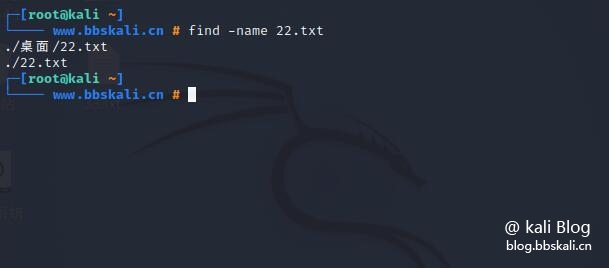
apt-get command
apt-get is a package manager for installing, deleting, cleaning, and updating packages.
The
dpkg command
dpkg command is used to install deb files in Kali Linux. You can also use the dpkg command to delete the package. Kali Linux is a Debian-based operating system, so you can install .deb files.
Format: dpkg -i package name
The
du command
du command is used to display the amount of disk space used by files and directories.
adduser command
adduser Add user, that is, add users in Linux.
passwd command
passwd command to modify password
If you modify the root password
passwd root
usermod command
The usermod command is used to modify users in the group.
lsb_release command
The lsb_relase command is used to check the version of Kali Linux.
lsb_release -a 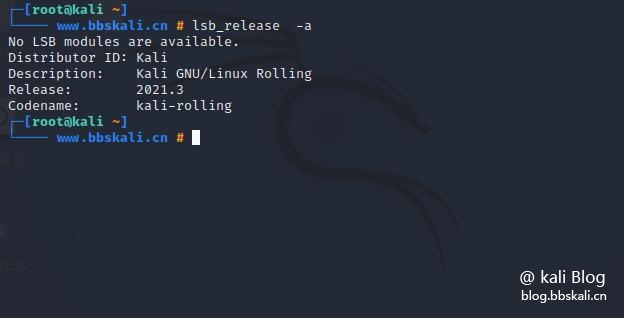
SCP Command
The scp command is used to securely copy files from one device to another. There are several ways to transfer files from one system to another.
But scp copy files through ssh protocol. A system should have an ssh server running.
scp [Options] [ user@ ]SRC_HOST:]file1_Path [ user@ ]DEST_HOST:]file2
unzip command
The decompression command is equivalent to the right-click of Windows - decompression
unzip bbskali.zip
Postscript
Of course, there are many fun commands in kali, so I won’t talk about them here. For more tutorials, please follow our WeChat official account Kali Hacker Notes.




.png.c9b8f3e9eda461da3c0e9ca5ff8c6888.png)
